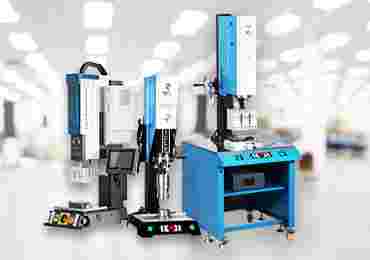Ultrasonic welding is a precision joining process increasingly used in battery, electric vehicle (EV), and electronics manufacturing. These sectors demand high-performance, reliable welds on sensitive components where even minor defects can cause safety risks, product failures, or costly recalls. If you’re designing ultrasonic welders for these markets, there are industry-specific factors that can make or break performance and market acceptance.
1. Material Compatibility
Ultrasonic welding relies on high-frequency mechanical vibrations to bond materials without external heat or adhesives. This makes it ideal for:
-
Copper and aluminium conductors in EV batteries and wiring harnesses.
-
Thermoplastics in electronic housings and connectors.
The challenge is that each material has its own acoustic properties. Copper’s high density and conductivity require more energy, while thin electronic films can overheat quickly if vibration amplitude is too high. Designing adjustable frequency and amplitude controls allows operators to fine-tune welds for different materials.
2. Weld Quality Monitoring
In battery and EV applications, weld integrity is directly linked to safety and lifespan. A poor weld in a lithium-ion battery tab can lead to overheating or short-circuits. Modern ultrasonic welders often integrate:
-
Real-time process monitoring for weld force, time, and energy.
-
Automated quality checks with pass/fail indicators.
-
Data logging for traceability and compliance.
For electronics, these systems also help maintain the delicate balance between strong bonds and protection of sensitive circuitry.
3. Precision Control Systems
High-volume manufacturing in these sectors demands consistent output. Servo-driven welders provide tighter control over:
-
Vibration amplitude.
-
Weld pressure.
-
Weld duration.
In electronics, where tolerances are often in microns, precision control reduces rework and scrap rates. In battery production, it ensures each cell connection meets current-carrying requirements.
4. Heat Management
Although ultrasonic welding is considered a “cold” process, friction at the interface generates localised heat. In thin foil welding (common in battery cells), excess heat can deform or weaken the material. Incorporating:
-
Advanced cooling systems for sonotrodes and fixtures.
-
Duty cycle limits to avoid overheating during continuous runs.
is essential for maintaining production quality.
5. Ergonomics and Safety
For EV battery packs and large electronic assemblies, plastic welders must be designed with operator comfort and safety in mind. Features include:
-
Adjustable workstations to reduce repetitive strain.
-
Guarding and interlocks to prevent accidental exposure to moving parts.
-
Low-noise operation — ultrasonic systems can be loud, so effective acoustic enclosures improve workplace conditions.
6. Integration with Automation
EV and electronics production lines are increasingly automated. Welders need:
-
Robust communication interfaces (Ethernet/IP, PROFINET, etc.).
-
Modular tooling systems for rapid changeovers.
-
Compatibility with robotic handling systems.
For battery manufacturing, automation minimises human handling of sensitive, sometimes hazardous materials.
7. Compliance and Standards
Battery and EV components are regulated under strict safety and performance standards, such as:
-
IEC 62133 for battery safety.
-
Automotive-specific OEM welding specifications.
-
ISO standards for quality management.
Electronics manufacturing may require ESD (electrostatic discharge) safety measures and RoHS compliance. Welders must be designed to help operators meet these requirements without slowing production.
8. Durability and Maintenance
In high-volume plants, downtime is costly. Design considerations should include:
-
Heavy-duty frames to handle continuous vibration stresses.
-
Easy access for sonotrode replacement and alignment.
-
Predictive maintenance features using vibration and load monitoring.
9. Adaptability for Future Materials
Battery chemistries and electronics packaging evolve rapidly. A welder designed with adjustable parameters, software-upgradable controls, and interchangeable tooling offers longer service life and adaptability to new materials.
10. Cost of Ownership
Price is only part of the equation. Manufacturers weigh:
-
Energy consumption per weld.
-
Consumable lifespan (sonotrodes, fixtures).
-
Downtime for maintenance.
Lowering the cost per weld without compromising quality gives a competitive advantage.




